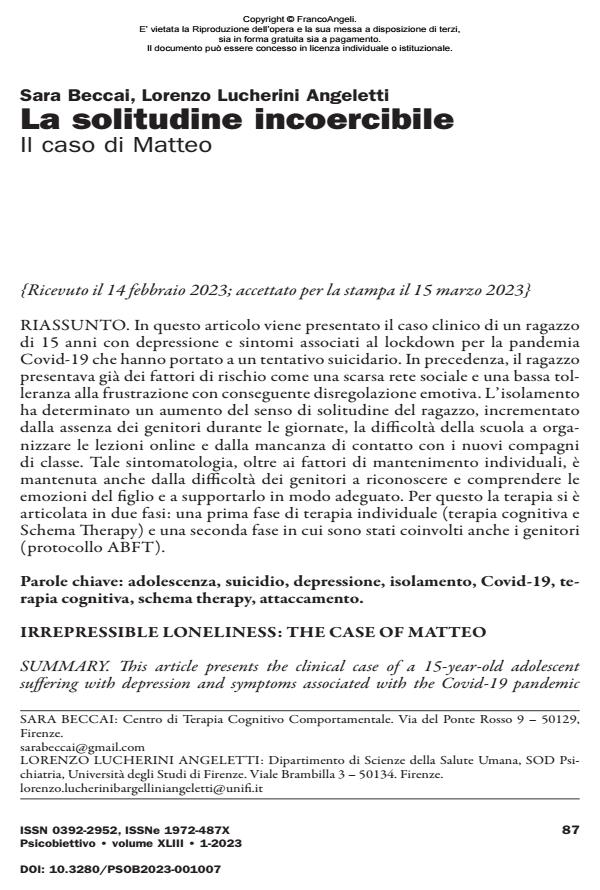Irrepressible loneliness: the case of Matteo
Journal title PSICOBIETTIVO
Author/s Sara Beccai, Lorenzo Lucherini Angeletti
Publishing Year 2023 Issue 2023/1
Language Italian Pages 10 P. 87-96 File size 629 KB
DOI 10.3280/PSOB2023-001007
DOI is like a bar code for intellectual property: to have more infomation
click here
Below, you can see the article first page
If you want to buy this article in PDF format, you can do it, following the instructions to buy download credits

FrancoAngeli is member of Publishers International Linking Association, Inc (PILA), a not-for-profit association which run the CrossRef service enabling links to and from online scholarly content.
This article presents the clinical case of a 15-year-old adolescent suffering with depression and symptoms associated with the Covid-19 pandemic lockdown, that led to an attempted suicide. The adolescent previously displayed risk factors such as a poor social network and low frustration tolerance, resulting in emotional dysregulation. Isolation resulted in an increased sense of loneliness for the adolescent, augmented by the absence of parents during the daytime, the school’s difficulty in organizing online classes, as well as the lack of contact with new classmates. This symptomatology, in addition to individual maintenance factors, was also maintained by the parents’ difficulty in recognizing and understanding their son’s emotions and supporting him appropriately. Therefore, therapy was divided into two phases: a first phase of individual therapy (cognitive therapy and Schema Therapy) and a second phase, in which parents were also involved (ABFT protocol).
Keywords: adolescence, suicide, depression, isolation, Covid-19, cognitive therapy, schema therapy, attachment.
Sara Beccai, Lorenzo Lucherini Angeletti, La solitudine incoercibile. Il caso di Matteo in "PSICOBIETTIVO" 1/2023, pp 87-96, DOI: 10.3280/PSOB2023-001007